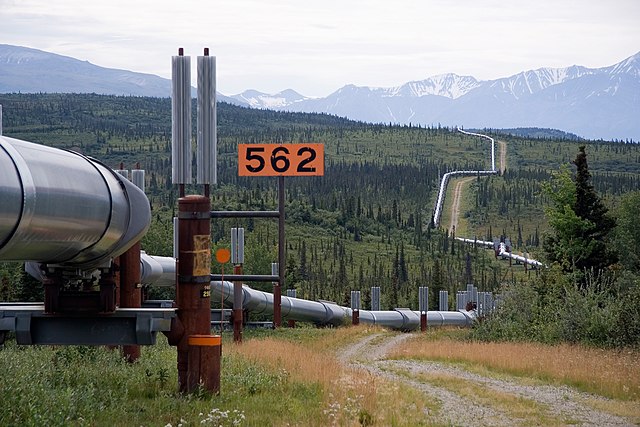We just learned about the US state of
Alabama.
Alaska is the biggest state in the whole US.
It is way up North, you have to drive up through Canada to get to it.
It's nicknames are: The Last Frontier and the Land of the Midnight Sun.
The name land of the midnight sun comes from the summer nights in Alaska.
During the summer solstice the sun is out for a whole day and night!
Alaska is so far North that in the middle of the summer the days are very very long, and in the middle of the winter the nights are very very long.
It's state motto is North to the Future.
Since Canada is between Alaska and the rest of the US, it is not part of what we call the
contiguous 48 states or sometimes the
lower 48 states.
Contiguous means next to each other or touching.

(from: wikipedia -
alaska)
The flag of Alaska is a blue background with the Big Dipper star constellation, and the North Star.
The blue is for the Alaska sky and the forget-me-not, an Alaskan flower.
The North Star is because Alaska is the state furthest in the North.
The Big Dipper is for the Great Bear which stands for strength.

(from: wikipedia -
flag of alaska)
The state seal of Alaska shows mountains and the northern lights. There is a building that stands for mining, a train for the railroads, and ships for all of the traffic in the sea. The trees are for the many forests in Alaska, and the farmer with his horse are all for the farming in the state. A fish and a seal on are for the fishing and seal hunting.
Alaska is the only state that has a seal on its seal.

(from: wikipedia -
seal of alaska)
Sometimes when people think of Alaska they think of the Inuit or Native people (sometimes called Eskimos) igloos and polar bears.
The Alaska Natives are the people who were living in Alaska for a very long time in the snow and ice.

(from: wikipedia -
alaska natives)
Mount McKinley in Alaska is the highest peak in all of North America at over 20,000 feet.

(from: wikipedia -
mount mckinley)
For many years Alaska was a part of the country of Russia.
In 1867 the US bought Alaska from Russia, which many people thought was a silly move.
They even called it "Seward's Folly" named after the person who bought it.
Then one day they found a lot of oil under the ground in Alaska, which was worth a lot of money!
They built an 800 mile long giant metal pipe to carry all the oil to the rest of the country, and it is called the Alaskan Pipeline.

(from: wikipedia -
trans-alaska pipeline system)
Kid Facts - Blast from the past: Vatican City








